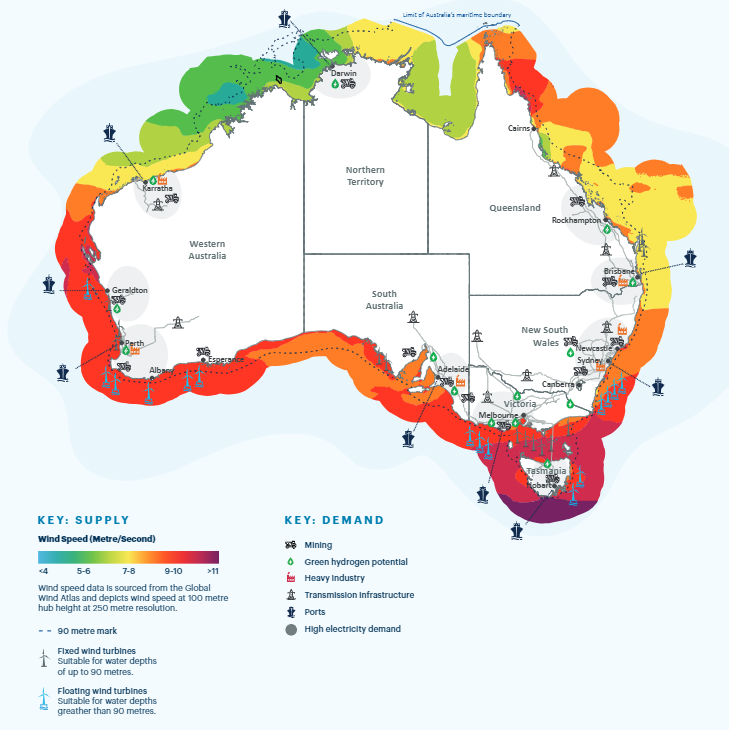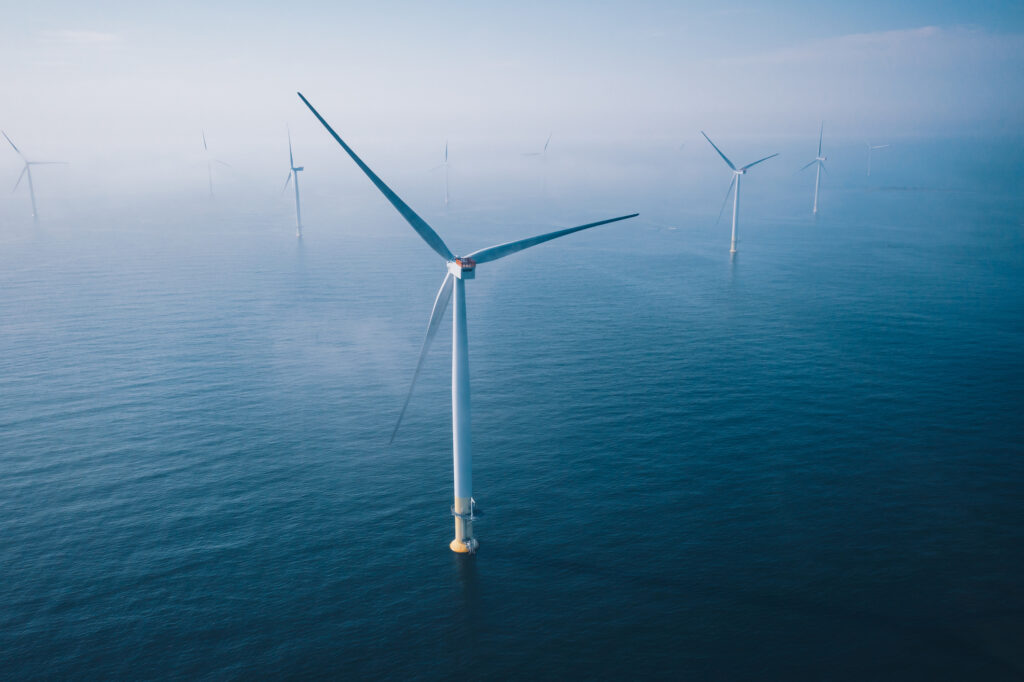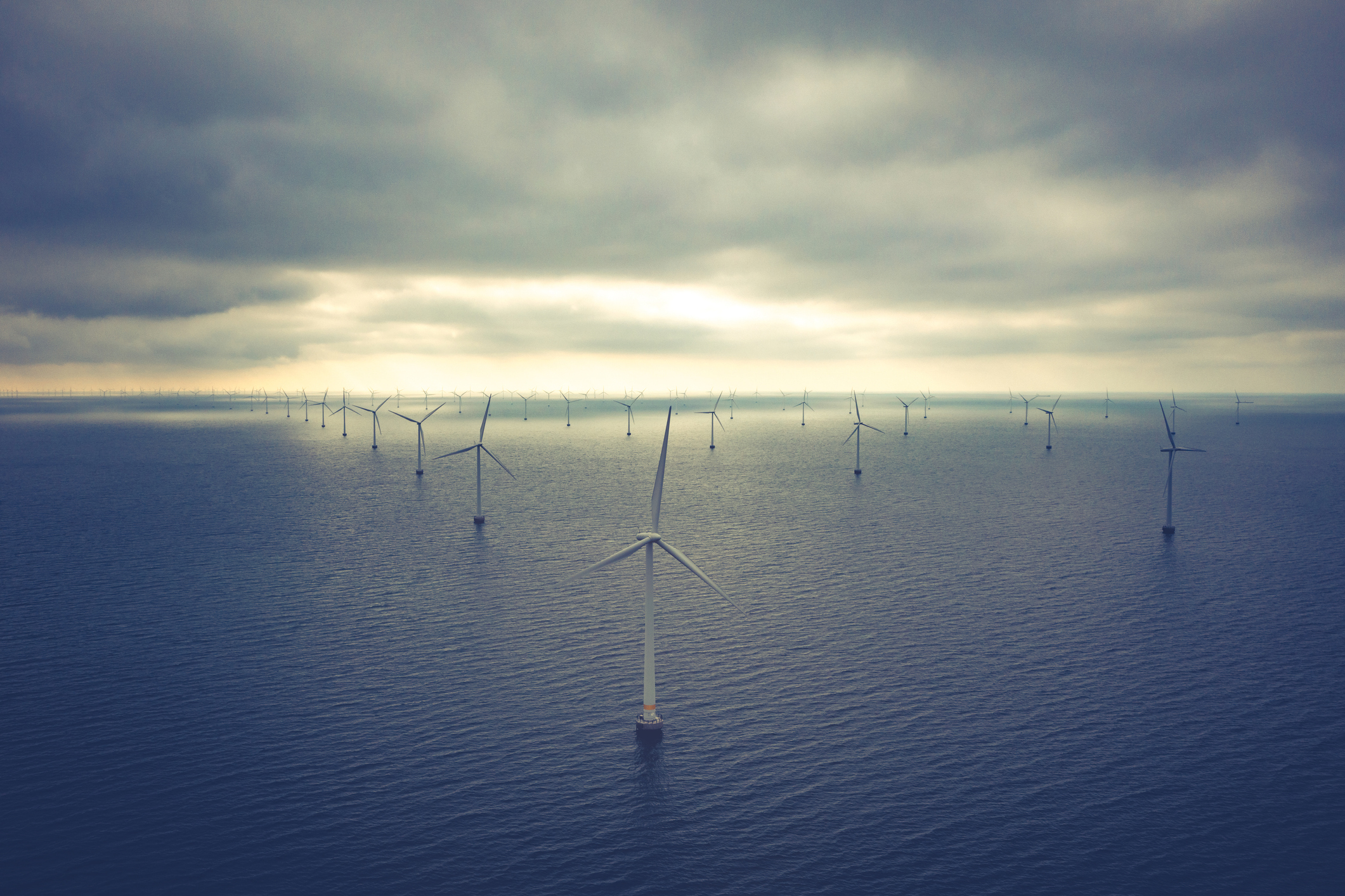Australia has some of the best offshore wind resources in the world, which are set to be captured by facilities scattered across our vast coastline in several years time.
The offshore wind industry is booming internationally, as countries around the globe use it as part of their renewable energy transition.
Wind farms are typically placed in windy locations, such as hilltops, but now Australia is looking offshore.
According to the Global Wind Energy Council, Australia has the potential to generate 5,000 gigawatts of electricity from offshore wind, which is 100 times the installed capacity of Australia’s two largest electricity networks. However, it’s likely to be several years before an offshore wind farm becomes operational in Australia.
The map below shows that the offshore wind resources in Australia are mostly around southern Australia near cities and industrial hubs and mining.

Image: The mean wind speed along our coastline in m/s and the offshore wind resources in Australia, October 2021, Source: NOPSEMA
Why go offshore?
There are several reasons why offshore wind farms are beneficial sources of energy in Australia, such as strong winds over the ocean, reduction in costs and the size of turbines and farms over water.
Strong winds over the ocean
Wind speeds across the ocean are consistently stronger than those over land, meaning more wind power can be produced by these offshore facilities.
The strongest winds in Australia are typically around coastal regions including western Tas and Vic, the Eyre Peninsula in SA, the southwestern coastline of WA and the Great Australian Bight. The winds are strongest in these regions due to the passage of cold fronts or low pressure systems and the Roaring Forties.
The Roaring Forties are gale force westerly winds that typically blow between the latitudes of 40° and 50° south shown in the image below.

These winds gain their power from the planetary–scale circulation as the atmosphere moves hot air from the equator to the poles. Since the planet rotates, these winds are deflected to blow from west to east by the Coriolis Effect. Unlike in the Northern Hemisphere, these winds encounter very little land to slow them down in the Southern Hemisphere, allowing them to blow consistently strong. Once used regularly by sailors, the power of the roaring forties will be harnessed by offshore wind turbines.
Size of turbines and farms
While building offshore wind farms is challenging and costly, the size of the wind turbines and farms at sea can be much larger than over land. The size of wind farms and individual turbines over land are restricted in size due to transport and other constraints like land use. The larger the wind turbine, the greater the amount of electricity that can be produced.

Cost and technology
The technology of offshore wind farms has improved over recent decades which has helped drive the cost of installing the wind farms down. The reduced costs and increased energy output make offshore wind farms a great renewable source of energy.
How can Weatherzone help the offshore wind industry?
Weatherzone Business offers a comprehensive suite of services, refined through years of collaboration with the marine, ports and offshore industries, to optimise the safety and efficiency of your operations.
We work with you to understand your intrinsic operational challenges and customise high-precision forecasting, metocean and aviation services to your exact location and operational scope.
When working offshore, our solutions can underpin planning and safe execution for offshore oil and gas enterprises and wind farms. Our data can support your exploration, development, rig moving, shuttle tanker operations, and production and decommissioning phases. Whether your crews are on-site, being transported to shore, or diving to perform maintenance, we deliver tailored weather risk briefings to ensure you choose the optimal time to proceed.
Weatherzone’s trusted nowcasting and forecasting system, OpticastTM, allows you to rapidly respond to changing conditions offshore, en route and in port. We take your port topography and berth orientation into account, ensuring site-specific forecasts. For offshore oil & gas, wind farms, ports and logistics, we have your weather situational awareness covered, no matter where you are. We deliver real-time severe weather and lightning alerts to your team via your integrated dashboard: Portzone, and our Weatherguard app.
Weatherzone’s Total Lightning Network (TLN) ensures you avoid hours of unnecessary downtime by providing the most accurate technology in lightning detection and alerting. Safeguard your teams and assets with lighting and Dangerous Thunderstorm Alerts (DTAs), customised to your existing parameters and delivered in real-time across all devices in your network. You gain full spatial awareness of developing severe weather systems, allowing you to plan ahead and, where needed, execute your shutdown and evacuation procedures.
With extreme conditions slowing production and affecting infrastructure, safety and transport, trust us to deliver Australia’s most precise weather data and tailored insight, giving you decisive confidence when it’s most needed. For more information, please contact us at business@weatherzone.com.au.






